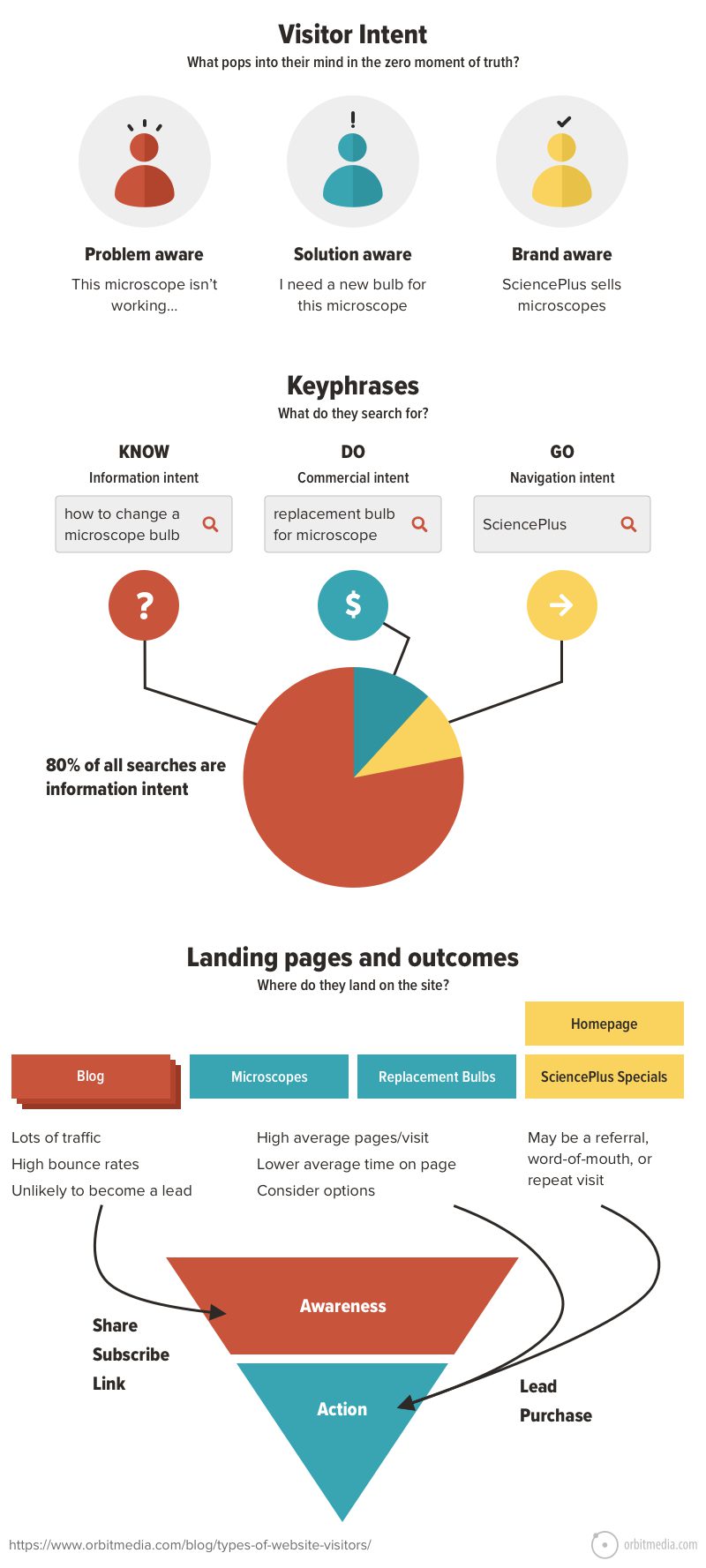Tube Rank: Your Guide to Video Success
Discover tips and insights for optimizing your video presence.
Navigating the Maze of Search Intent
Unlock the secrets of search intent and master online visibility. Discover strategies that drive traffic and boost engagement now!
Understanding the Four Types of Search Intent: A Comprehensive Guide
Search intent is crucial for optimizing your content and ensuring it meets the needs of your audience. Understanding the four types of search intent is essential for creating targeted SEO strategies. These categories include informational, navigational, transactional, and commercial investigation. Each type reflects a different stage in the user journey, making it imperative for marketers to tailor their content accordingly. For instance, users with informational intent seek answers to questions or general knowledge, while those with navigational intent are looking for specific websites or pages.
On the other hand, transactional intent indicates a user’s desire to make a purchase or complete a transaction, often searching for specific products or discounts. Lastly, commercial investigation users aim to compare options before making a purchase decision, which often includes reading reviews or examining product features. By understanding these categories, businesses can enhance their SEO efforts and meet user expectations more effectively. Ultimately, aligning your content strategy with the four types of search intent can lead to higher engagement and conversion rates.

How to Align Your Content Strategy with User Search Intent
To effectively align your content strategy with user search intent, it is crucial to first understand the different types of search intent. Search intent generally falls into four categories: informational, navigational, transactional, and commercial investigation. By identifying the primary intent behind the searches related to your niche, you can tailor your content to meet those specific needs. For instance, if users are seeking informational content, creating comprehensive guides or how-to articles may serve them best, whereas transactional intent would require optimized product pages that facilitate purchases.
Furthermore, utilizing tools such as keyword research and data analytics can further enhance your ability to align your content with user search intent. Start by analyzing popular search terms and questions in your industry, then create content that answers those queries. This could involve structuring your content into FAQ sections, using bullet points for easy readability, or incorporating rich snippets to enhance visibility in search results. Regularly revisiting your content strategy and adapting to changing search behaviors is key to maintaining alignment with user intent over time.
What is Search Intent and Why Does It Matter for SEO?
Search Intent refers to the underlying motivation or purpose behind a user's query in a search engine. Understanding this concept is crucial for SEO, as it helps content creators align their material with what users are genuinely looking for. There are primarily four types of search intents: informational, navigational, commercial, and transactional. By identifying the type of search intent, businesses can tailor their content to better meet user needs, which can lead to improved ranking on search engines and higher engagement rates.
Why does search intent matter for SEO? Well, when search engines like Google analyze a user's query, they aim to deliver the most relevant results that meet that intent. If your content aligns well with user intent, it is more likely to rank higher, resulting in increased visibility and traffic. Additionally, satisfying user intent can lead to better user experiences, lower bounce rates, and increased conversions. Ultimately, mastering search intent is essential for anyone looking to achieve sustainable SEO success and maintain a competitive advantage in the digital landscape.